<< Our Photo Pages >> The Wrekin - Hillfort in England in Shropshire
Submitted by TimPrevett on Monday, 30 March 2009 Page Views: 35862
Iron Age and Later PrehistorySite Name: The Wrekin Alternative Name: Cuckoo’s Cup, Raven’s BowlCountry: England
NOTE: This site is 0.3 km away from the location you searched for.
County: Shropshire Type: Hillfort
Nearest Town: Telford
Map Ref: SJ630083 Landranger Map Number: 127
Latitude: 52.671136N Longitude: 2.548604W
Condition:
| 5 | Perfect |
| 4 | Almost Perfect |
| 3 | Reasonable but with some damage |
| 2 | Ruined but still recognisable as an ancient site |
| 1 | Pretty much destroyed, possibly visible as crop marks |
| 0 | No data. |
| -1 | Completely destroyed |
| 5 | Superb |
| 4 | Good |
| 3 | Ordinary |
| 2 | Not Good |
| 1 | Awful |
| 0 | No data. |
| 5 | Can be driven to, probably with disabled access |
| 4 | Short walk on a footpath |
| 3 | Requiring a bit more of a walk |
| 2 | A long walk |
| 1 | In the middle of nowhere, a nightmare to find |
| 0 | No data. |
| 5 | co-ordinates taken by GPS or official recorded co-ordinates |
| 4 | co-ordinates scaled from a detailed map |
| 3 | co-ordinates scaled from a bad map |
| 2 | co-ordinates of the nearest village |
| 1 | co-ordinates of the nearest town |
| 0 | no data |
Internal Links:
External Links:
I have visited· I would like to visit
George998 visited on 1st Jan 2018 - their rating: Cond: 3 Amb: 4 Access: 3
Marko visited on 6th May 2017 - their rating: Cond: 4 Amb: 3 Access: 3
BrownEdger visited on 14th Aug 2011 - their rating: Cond: 3 Amb: 4
TimPrevett Serenstar have visited here
Average ratings for this site from all visit loggers: Condition: 3.33 Ambience: 3.67 Access: 3
Finds of pilum (javelin) heads, as well as signs of burning in the 1st century AD give this credence. The Wrekin, besides being the capital of The Cornovii at an imposing 1,300 feet above sea level, was of strategic importance.
This tribe governed a substantial area from the Midlands, up to the Wirral (perhaps where their name comes from – ‘Cornu’ the Roman horn, with the shape of the Wirral being arguably horn shaped), and in order to help launch a conquest of what is now Wales. Their economic strength, and their salt resources were also vital for the Romans to control - the Cornovii’s territory contained three of Britain’s four inland salt spas – Nantwich, Middlewich, and Northwich (the other being Droitwich in The Midlands).
The population, subsequent to Roman conquest, was resettled and developed into Wroxeter, also known as Viroconium Cornovium - becoming a hugely significant Romano-British city for over 400 years, well into 'The Dark Ages'. The ruins of Wroxeter are now under the care of English Heritage.
As for the fort itself, there are two entrances to the north east, Hell Gate, entering the outer area, and then Heaven Gate to enter the highest ground; both are inturned. The names come from folklore of a battle here during Cromwell’s time where a battle was lost and won. There are also entrances to the south west of the fort, which are easily recognizable.
The hillfort makes use of the hill’s natural defensive capabilities, with ramparts incorporating natural outcrops in places. The most substantial ramparts remain on the northern side of the hill, with more slight ramparts visible in many places around the summit.
Various flints, and corn seeds which have been radio carbondated to 900BC indicates the site’s usage as a settlement before the Iron Age. The principle phase of occupation dates from at least 400 years before the Roman invasion, with perhaps as many as 1,000 people living in and around the hillfort.
Excavations have taken place here in 1939 and 1973.
The Wrekin hillfort SJ629082 also has a cairn (trig point and toposcope on top at SJ628080), barrow at SJ631083 (between Heaven & Hell Gate), and St Hawthorn’s Well, (the site of a holy well near the summit), at SJ 630080.The well, recorded around 1540, was in use up to the late 19th century and attributed with properties of especially helping heal skin conditions.
JRR Tolkien used to walk the hill when he lived in Penkridge, and is said to have given him inspiration in writing The Lord of The Rings; The Wrekin, in terms of its signifance to the landscape, has also been compared to Ayer’s Rock in Australia. It is a Site of Special Scientific Interest, and an Area of Outstanding Natural Beauty.
In folklore, the hill is attributed to Giants fighting each other, throwing mud, which became the hill; geologically, it is formed from lava and volcanic ash, though is not actually an extinct volcano.
Parking at the roadside to the north east, and in an area in front of a quarry at SJ639093, the best access is a path which enters from the north east; about one quarter of the way up there is a house selling refreshments, a small seating area, and one convenience.
Note: Is there an ancient calendar stone on the Wrekin? See latest comment.
You may be viewing yesterday's version of this page. To see the most up to date information please register for a free account.
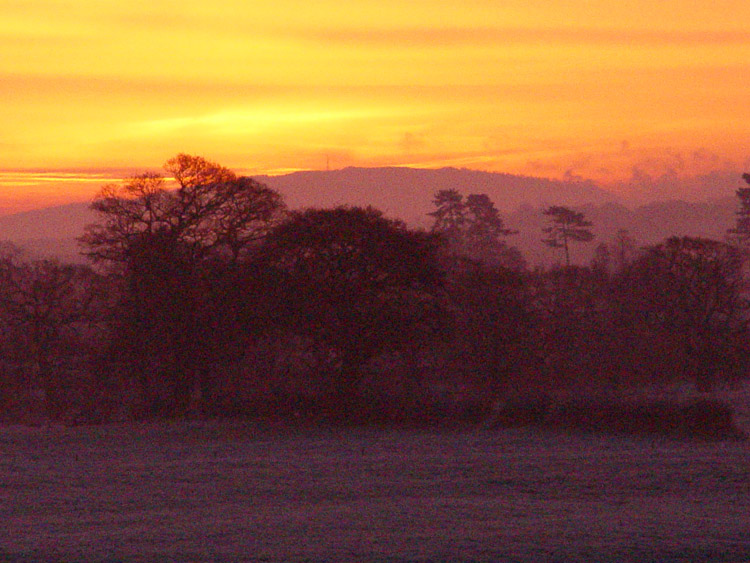
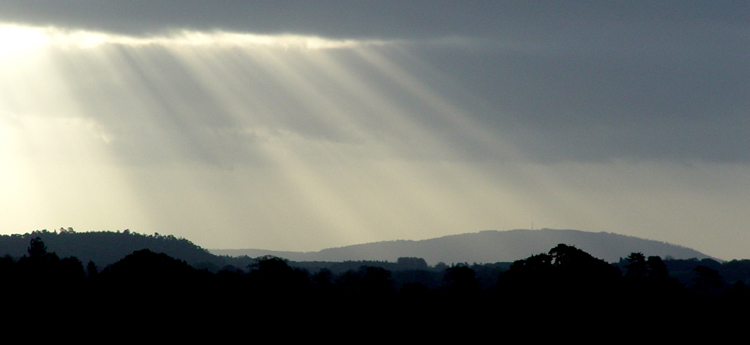
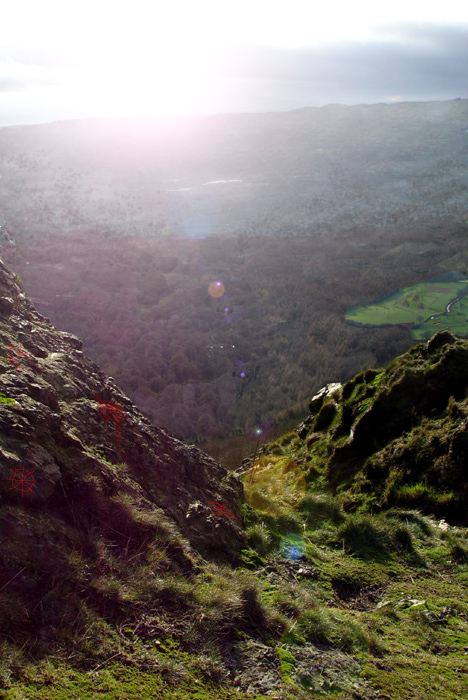
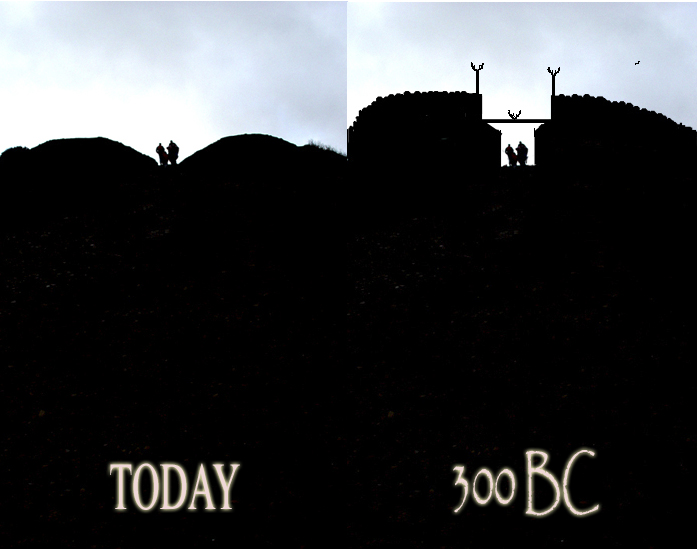

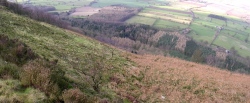
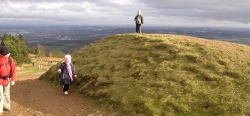
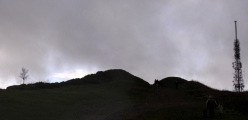

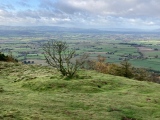
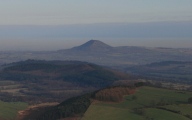
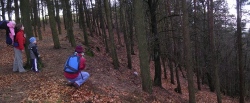


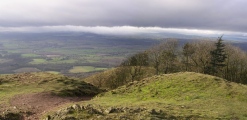
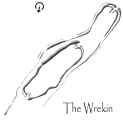
Do not use the above information on other web sites or publications without permission of the contributor.
Click here to see more info for this site
Nearby sites
Key: Red: member's photo, Blue: 3rd party photo, Yellow: other image, Green: no photo - please go there and take one, Grey: site destroyed
Download sites to:
KML (Google Earth)
GPX (GPS waypoints)
CSV (Garmin/Navman)
CSV (Excel)
To unlock full downloads you need to sign up as a Contributory Member. Otherwise downloads are limited to 50 sites.
Turn off the page maps and other distractions
Nearby sites listing. In the following links * = Image available
997m E 90° Willow Moor Barrow Cemetary* Barrow Cemetery (SJ640083)
4.8km NNE 33° St Margarets Well (Telford) Holy Well or Sacred Spring (SJ656123)
8.3km WSW 243° Cove Coppice* Barrow Cemetery (SJ555046)
8.4km S 184° Holy Trinity (Much Wenlock)* Ancient Cross (SO623999)
8.4km S 185° St Owens Well* Holy Well or Sacred Spring (SO622999)
8.7km WSW 237° Stevenshill* Hillfort (SJ556036)
9.2km NNE 17° Kynnersley Burnt Mounds Artificial Mound (SJ657171)
9.4km E 82° Castle Farm Hillfort* Hillfort (SJ724095)
9.5km S 183° St Milburgas Well (Much Wenlock)* Holy Well or Sacred Spring (SO625988)
9.6km NW 309° Upton Magna* Timber Circle (SJ555144)
10.8km NNE 28° Wall Camp* Hillfort (SJ681178)
10.8km WNW 300° Haughmond Hill Camp* Hillfort (SJ537138)
11.6km NW 314° Ebury Hillfort* Hillfort (SJ546164)
12.2km SW 232° The Frog Well Holy Well or Sacred Spring (SJ53340084)
12.9km W 279° Shrewsbury Orthodox Church* Cursus (SJ5026310469)
12.9km N 355° Ellerdine Heath* Standing Stone (Menhir) (SJ6191821168)
14.0km W 271° The Burgs* Hillfort (SJ48950873)
14.4km WNW 287° High Cross (Shrewsbury) Ancient Cross (SJ492126)
14.8km WNW 286° Shrewsbury Museum and Art Gallery* Museum (SJ488126)
14.9km ENE 57° Pave Lane Hillfort* Misc. Earthwork (SJ756164)
14.9km SSE 164° Morville Cross* Ancient Cross (SO6695893875)
15.6km SSW 205° Mogg Forest Hillfort* Hillfort (SO5621194262)
15.9km SW 232° The Lawley (Northern)* Hillfort (SO50289863)
17.3km SW 231° The Lawley (Summit)* Hillfort (SO49459745)
17.9km SE 134° St Peter's Well (Worfield)* Holy Well or Sacred Spring (SO758958)
View more nearby sites and additional images



 We would like to know more about this location. Please feel free to add a brief description and any relevant information in your own language.
We would like to know more about this location. Please feel free to add a brief description and any relevant information in your own language. Wir möchten mehr über diese Stätte erfahren. Bitte zögern Sie nicht, eine kurze Beschreibung und relevante Informationen in Deutsch hinzuzufügen.
Wir möchten mehr über diese Stätte erfahren. Bitte zögern Sie nicht, eine kurze Beschreibung und relevante Informationen in Deutsch hinzuzufügen. Nous aimerions en savoir encore un peu sur les lieux. S'il vous plaît n'hesitez pas à ajouter une courte description et tous les renseignements pertinents dans votre propre langue.
Nous aimerions en savoir encore un peu sur les lieux. S'il vous plaît n'hesitez pas à ajouter une courte description et tous les renseignements pertinents dans votre propre langue. Quisieramos informarnos un poco más de las lugares. No dude en añadir una breve descripción y otros datos relevantes en su propio idioma.
Quisieramos informarnos un poco más de las lugares. No dude en añadir una breve descripción y otros datos relevantes en su propio idioma.